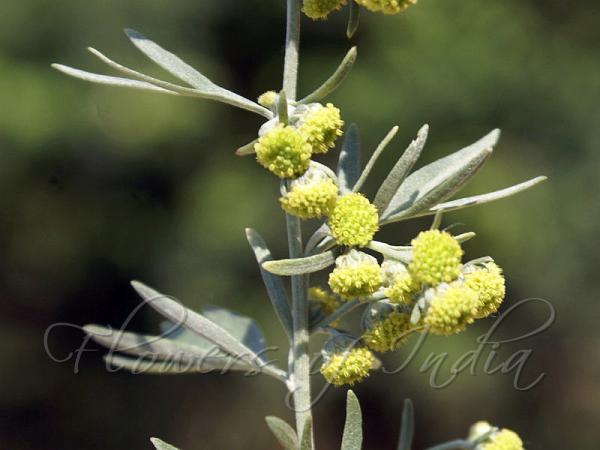|
| Wormwood |
|

|

| File size | 86092 |
| Original date | 6/22/10 9:22 PM |
| Resolution | 800 x 600 |
| Flash | Flash did not fire, auto |
| Focal length | 70.0mm |
| Exposure time | 1/160s |
| Aperture | 9.0 |
| Focus Distance | |
| Metering Mode | Multi-segment |
| Camera make | SONY |
| Camera model | DSLR-A100 |
| Sensor type |
|
|
|
|
Photo: |
Botanical name: Artemisia absinthium Family: Asteraceae (Sunflower family)
Wormwood is a perennial herb with a hard, woody rhizome. The stems are
straight, growing to 0.8-1.2 m (rarely 1.5 m) tall, grooved, branched, and
silvery-green. The leaves are spirally arranged, greenish-grey above and
white below, covered with silky silvery-white trichomes, and bearing
minute oil-producing glands. The basal leaves are up to 25 cm long,
bipinnate to tripinnate with long stalks. Stem leaves are smaller, 5-10 cm
long, less divided, and with short stalks. The uppermost leaves can be
both simple and stalkles. Flowers are pale yellow, tubular, and clustered
in spherical bent-down heads, which are in turn clustered in leafy and
branched panicles. pollination is anemophilous. The fruit is a small
achene; seed dispersal is by gravity. It grows naturally on uncultivated,
arid ground, on rocky slopes, and at the edge of footpaths and fields. Flowering: June-September.
Medicinal uses: Its use has been claimed to remedy indigestion
and gastric pain, it acts as an antiseptic, and as a febrifuge. For
medicinal use, the herb is used to make a tea for helping pregnant women
during pain of labor. A dried encapsulated form of the plant is used as an
anthelmintic.
Its use has been claimed to remedy indigestion
and gastric pain, it acts as an antiseptic, and as a febrifuge. For
medicinal use, the herb is used to make a tea for helping pregnant women
during pain of labor. A dried encapsulated form of the plant is used as an
anthelmintic.
Medicinal uses:
 Its use has been claimed to remedy indigestion
and gastric pain, it acts as an antiseptic, and as a febrifuge. For
medicinal use, the herb is used to make a tea for helping pregnant women
during pain of labor. A dried encapsulated form of the plant is used as an
anthelmintic.
Its use has been claimed to remedy indigestion
and gastric pain, it acts as an antiseptic, and as a febrifuge. For
medicinal use, the herb is used to make a tea for helping pregnant women
during pain of labor. A dried encapsulated form of the plant is used as an
anthelmintic. | Identification credit: Gurcharan Singh | Photographed on Shankeracharya hill, Kashmir. |
• Is this flower misidentified? If yes,